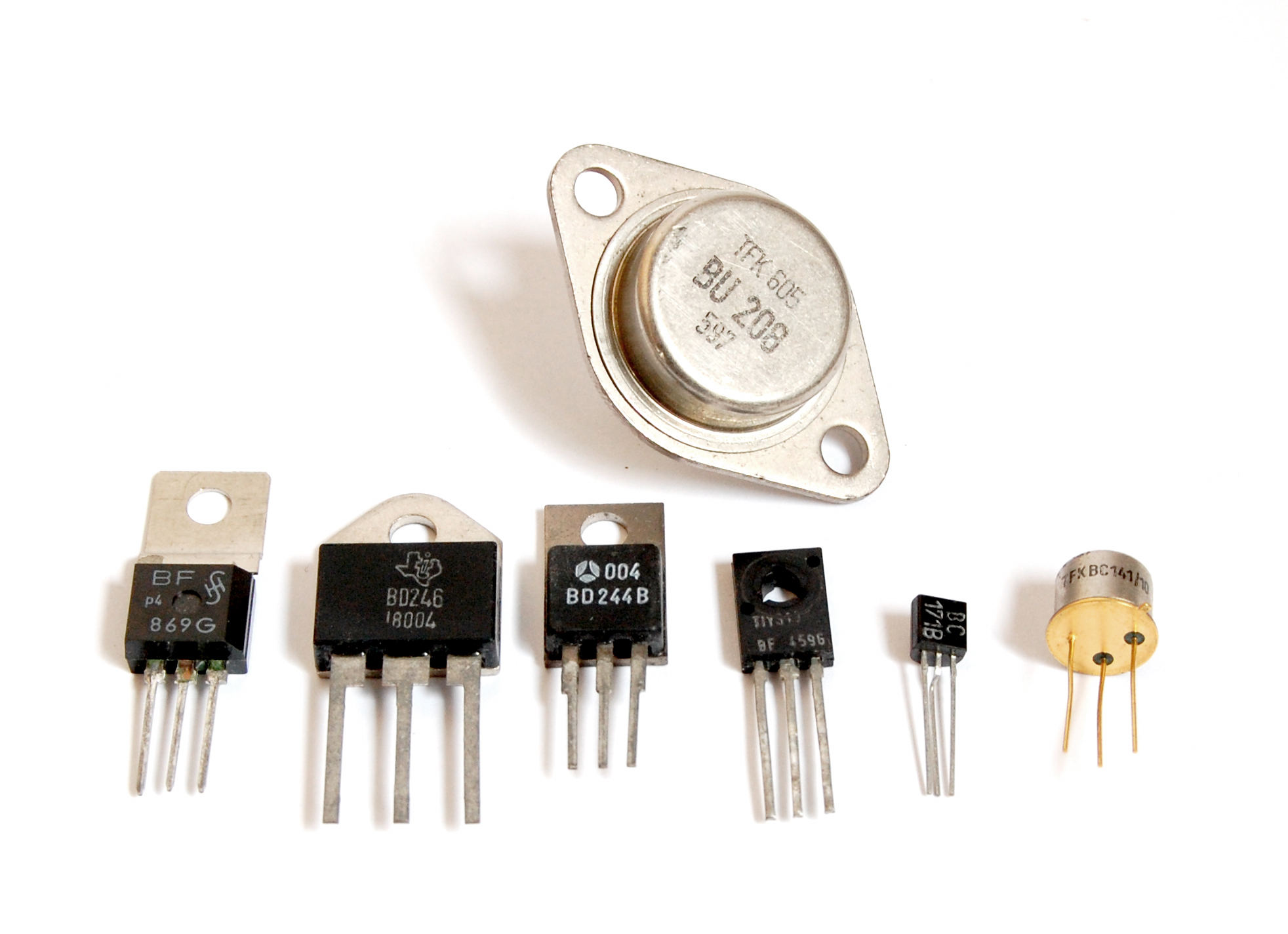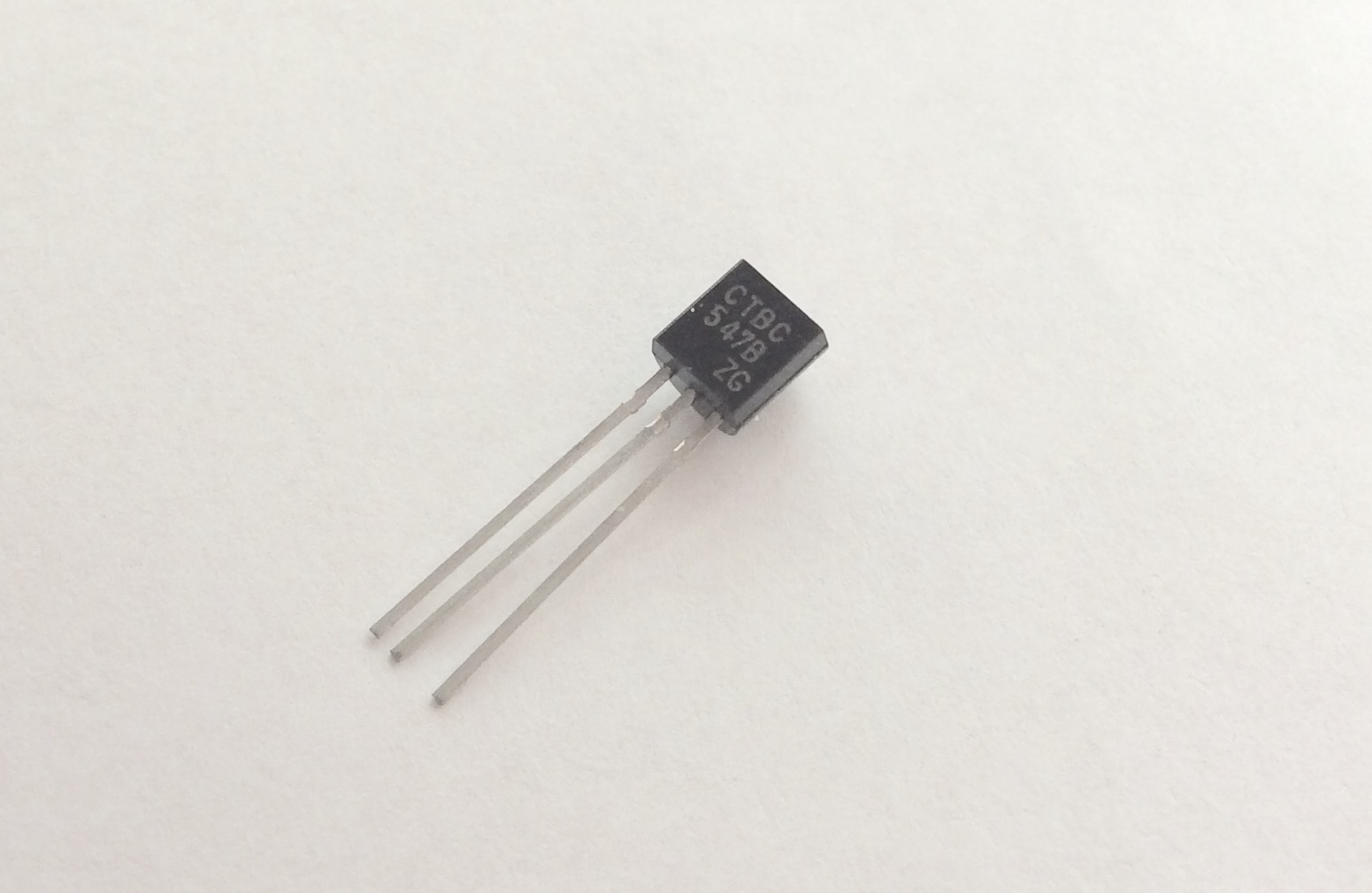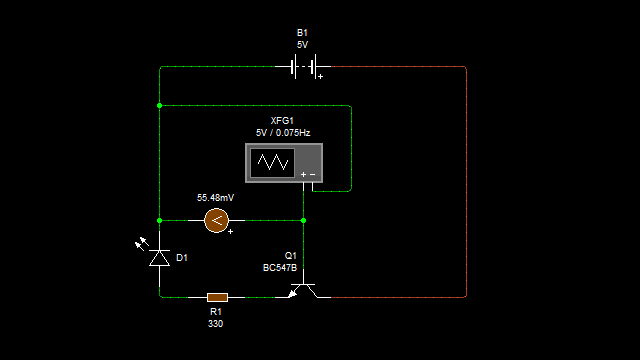The Door Buzzer
1 Transistors
Learn It
- In this project you're going to make an electronic door buzzer, like the one shown below.
Learn It
- To activate the buzzer and the LED, we're going to use a circuit component called a transistor.
- In this lesson you'll learn what a transistor is and how it can be used as an electronic switch
Learn It
- Transistors come in many shapes and sizes, but they all have one thing in common.
Research It
- All transistors have three legs - a collector, a base and an emitter.
- The type of transistor you're going to be using is a BC547B, which looks like this.
- Use online resources to help you label the picture above, to show which legs are which.
Try It
- The circuit symbol for a transistor looks like this.
- The legs have been labelled B,C and E.
- Now look at the simulation below. This shows a transistor connected to a 5V Power supply, with an LED.
- The symbol with an V in it is an Voltmeter - which will be found under 'Test instruments' at the bottom of the options list.
- The symbol with an XFG1 in it is a Function Generator - which will be found under 'Test instruments' at the bottom of the options list. - Once you have added this, you will need to double click on it and change it to 'Triangle waveform' and change the frequency to '0.075Hz'.
- Connected to the
base of the transistor is a signal generator.
- The signal generator produces a varying voltage, going from 0 up to 5V and then back down again.
- The voltmeter will tell you the voltage being produced by the signal generator.
Badge It
- Copy an image of the BC547B transistor and label each pin.
- In the circuit above, try and explain what is causing the LED to switch on and off again.
- Make sure your are using the following terms:
- Base
- Collector
- Emitter
- Signal Generator
- LED
- Current
- Voltage
- Your badge will be awarded by the quality of your explanation to the circuit above.
- The silver badge must include the diagram.
- Silver - A reasonable attempt at an explanation of the circuit plus labelled image of BC547B
- Gold - A correct explanation that uses the term base, collector and emitter.
- Platinum - A detailed explanation using all the terms from the badge task
- Once you have completed your research. You will now need to explain how the transistor work to the person sitting next to you. Ask them to give you some feedback on how well you explained the operation and make a note of this in your badges.



